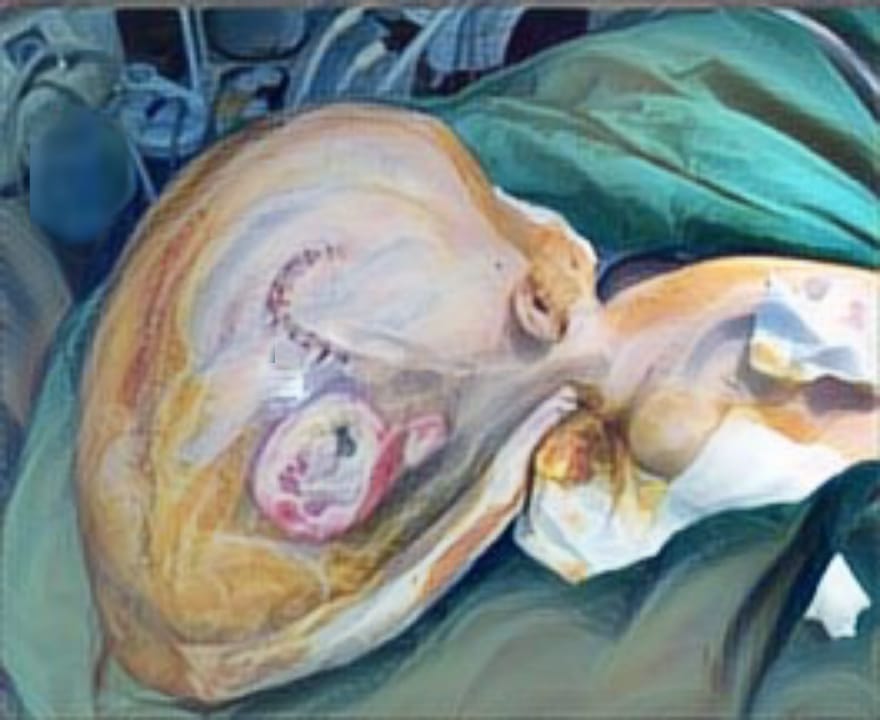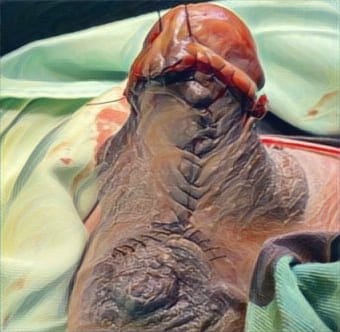MODIFIED CLEFT LIP EVALUATION PROFILE (MCLEP) INDEX FOR UNILATERAL CLEFT LIP REPAIR OUTCOME ASSESSMENT IN SURABAYA CLP CENTER
Downloads
Highlights:
- The study revealed that there were no notable variations in the ultimate scores, regardless of whether the cleft lip was complete or an alveolar cleft was present.
- If the palate cleft was not present, unilateral cleft lip repair yielded considerably superior results, showing enhancements in both total lip and nose scores.
Abstract:
Introduction: Cleft lip and/or palate is the most common craniofacial congenital anomaly encountered by the plastic surgeon. Both reconstruction and outcome assessment are challenging. This study aimed to assess the outcome of unilateral cleft lip repair in the Surabaya CLP Center.
Methods: All patients who underwent unilateral cleft lip repair in 2017 were included in the study. Those without complete photographs at minimally 52 weeks after surgery were excluded. The photographs of patients taken at least one-year post-surgery were assessed using a modified cleft lip evaluation profile (MCLEP) index. The data were then analyzed using statistical software.
Results: There were 38 subjects included in the study. There was no significant difference in the final scores obtained based on completeness of the cleft lip and the presence of alveolar cleft. The total nose score was significantly better in the left side cleft (p = 0.002). When palate cleft was absent, the total lip score (p= 0.038), the total nose score (p = 0.008), and total score (p = 0.000) were also significantly better.
Conclusion: The unilateral cleft lip repair in CLP Center Surabaya yielded good and symmetrically acceptable results. The study failed to observe the different outcomes of unilateral cleft lip repair based on completeness of the cleft lip and the presence of alveolar cleft. However, the unilateral cleft lip repair outcome was significantly better in the absence of palate cleft.
Hopper RA. Cleft Lip and Palate: Embryology, Principles, and Treatment. In: Thorne CH, Chung KC, Gosain AK, Gurtner GC, Mehrara BJ, Rubin JP, et al., editors. Grabb and Smith's Plastic Surgery. 7th Ed. Philadelphia: Lippincott Williams & Wilkins; 2014. p. 173–99.
Kadri N, Ismael S, Raid N, Surhono A, Harianto A. Congenital Malformations and Deformations in Provincial Hospitals in Indonesia. Congenit Anom (Kyoto). 1995;35(4):411–23.
Ruslin M, Dom L, Tajrin A, Yusuf ASH, Arif SK, Tanra AH, et al. Establishing cleft services in developing countries: Complications of cleft lip and palate surgery in rural areas of Indonesia. Arch Plast Surg. 2019;46(6):511–7.
Trotman CA, Faraway JJ, Phillips C. Visual and statistical modeling of facial movement in patients with cleft lip and palate. Cleft Palate-Craniofacial J. 2005;42(3):245–54.
Mulliken JB, LaBrie RA. Fourth-dimensional changes in nasolabial dimensions following rotation-advancement repair of unilateral cleft lip. Plast Reconstr Surg. 2012;129 (2): 491–8.
Millard DR. Cleft Craft: the Evolution of its Surgery, Vol 1: The Unilateral Deformity. Boston: Little, Brown & Co; 1976.
Tse R. Unilateral cleft lip: Principles and practice of surgical management. Semin Plast Surg. 2012;26(4):145–55.
Ettinger RE, Buchman SR. Cleft Lip and Palate: Embryology, Principles, and Treatment. In: Chung KC, editor. Grabb and Smith's Plastic Surgery. 8th Editio. Philadelphia: Wolters Kluwer; 2020.
Sitzman TJ, Girotto JA, Marcus JR. Current Surgical Practices in Cleft Care: Unilateral Cleft Lip Repair. Plast Reconstr Surg. 2008;121(5):261e-270e.
Roussel LO, Myers RP, Girotto JA. The Millard rotation-advancement cleft lip repair: 50 years of modification. Cleft Palate- Craniofacial J. 2015;52(6):e188–95.
Mohler LR. Unilateral Cleft Lip Repair. Plast Reconstr Surg. 1987;80(4):511–6.
Cutting CB, Dayan JH. Lip height and lip width after extended Mohler unilateral cleft lip repair. Plast Reconstr Surg. 2003 Jan;111(1):16–7.
Fisher DM. Unilateral cleft lip repair: An anatomical subunit approximation technique. Plast Reconstr Surg. 2005;116(1):61–71.
Asher-McDade C, Roberts C, Shaw WC, Gallager C. Development of a Method for Rating Nasolabial Appearance in Patients with Clefts of the Lip and Palate. Cleft Palate- Craniofacial J. 1991;28(4):385–91.
Ohannessian P, Berggren A, Abdiu A. The cleft lip evaluation profile (CLEP): A new approach for postoperative nasolabial assessment in patients with unilateral cleft lip and palate. J Plast Surg Hand Surg. 2011;45:8–13.
Johnson N, Sandy J. An aesthetic index for evaluation of cleft repair. Eur J Orthod. 2003;25:243–9.
Campbell A, Restrepo C, Deshpande G, Tredway C, Bernstein SM, Patzer R, et al. Validation of a Unilateral Cleft Lip Surgical Outcomes Evaluation Scale for Surgeons and Laypersons. Plast Reconstr Surg– Glob Open. 2017;5(9):1–7.
Assuncao AGA. The V.L.S. classification for secondary deformities in the unilateral cleft lip. Br J Plast Surg. 1992;45(4):288–92.
Edler R, Abd Rahim M, Wertheim D, Greenhill D. The use of facial anthropometrics in aesthetic assessment. Cleft Palate-Craniofacial J. 2010;47(1):48– 57.
Asher-McDade C, Dahl E, Molsted K, Prahl- Andersen B, Shaw WC. A Six-Center International Study of Treatment Outcome in Patients with Clefts of the Lip and Palate: Part 4. Assessment of Nasolabial Appearance. Cleft Palate-Craniofacial J.1992;29(5):409–12.
Mercado A, Russell KA, Hathaway R, Daskalogiannakis J, Sadek H, Long RE, et al. The Americleft study: An inter-center study of treatment outcomes for patients with unilateral cleft lip and palate part 4. Nasolabial aesthetics. Cleft Palate- Craniofacial J. 2011;48(3):259–64.
Marzoeki D. Repositioning of the Nose in Primary Unilateral Cleft Lip Closure (Dissertation). Surabaya: Airlangga University Press; 1989.
Chang CS, Por YC, Liou EJW, Chang CJ, Chen PKT, Noordhoff MS. Long-term comparison of four techniques for obtaining nasal symmetry in unilateral complete cleft lip patients: A single surgeon's experience. Plast Reconstr Surg. 2010;126(4):1276–84.
Byrd HS, Salomon J. Primary correction of the unilateral cleft nasal deformity. Plast Reconstr Surg. 2000 Nov;106(6):1276–86.
Sulaiman FK, Haryanto IG, Hak S, Nakamura N, Sasaguri M, Ohishi M. Fifteen-year follow- up results of presurgical orthopedics followed by primary correction for unilateral cleft lip nose in Program SEHATI in Indonesia. Cleft Palate-Craniofacial J. 2013;50(2): 129–37.
Tajima S, Maruyama M. Reverse-U Incision for Secondary Repair of Cleft Lip Nose. Plast Reconstr Surg. 1977;60(2):256–61.
Lonic D, Morris DE, Lo LJ. Primary overcorrection of the unilateral cleft nasal deformity: Quantifying the results. Ann Plast Surg. 2016;77(00): S25–9.
Narayanan P V., Adenwalla HS. Unfavourable results in the repair of the cleft lip. Indian J Plast Surg. 2013;46(2): 171.
Arista, T. H., & Hutagalung, M. R. Successful Pharyngoplasty After Le Fort I Advancement In A Severely Neglected Cleft Lip And Palate Patient. Jurnal Rekonstruksi Dan Estetik, 2019.4(1), 30-33
Copyright (c) 2020 Robertus Arian Datusanantyo, Magda Rosalina Hutagalung, Sitti Rizaliyana

This work is licensed under a Creative Commons Attribution-ShareAlike 4.0 International License.
JURNAL REKONSTRUKSI DAN ESTETIK by Unair is licensed under a Creative Commons Attribution-ShareAlike 4.0 International License.
- The journal allows the author to hold copyright of the article without restriction
- The journal allows the author(s) to retain publishing rights without restrictions.
- The legal formal aspect of journal publication accessbility refers to Creative Commons Attribution Share-Alike (CC BY-SA)




















